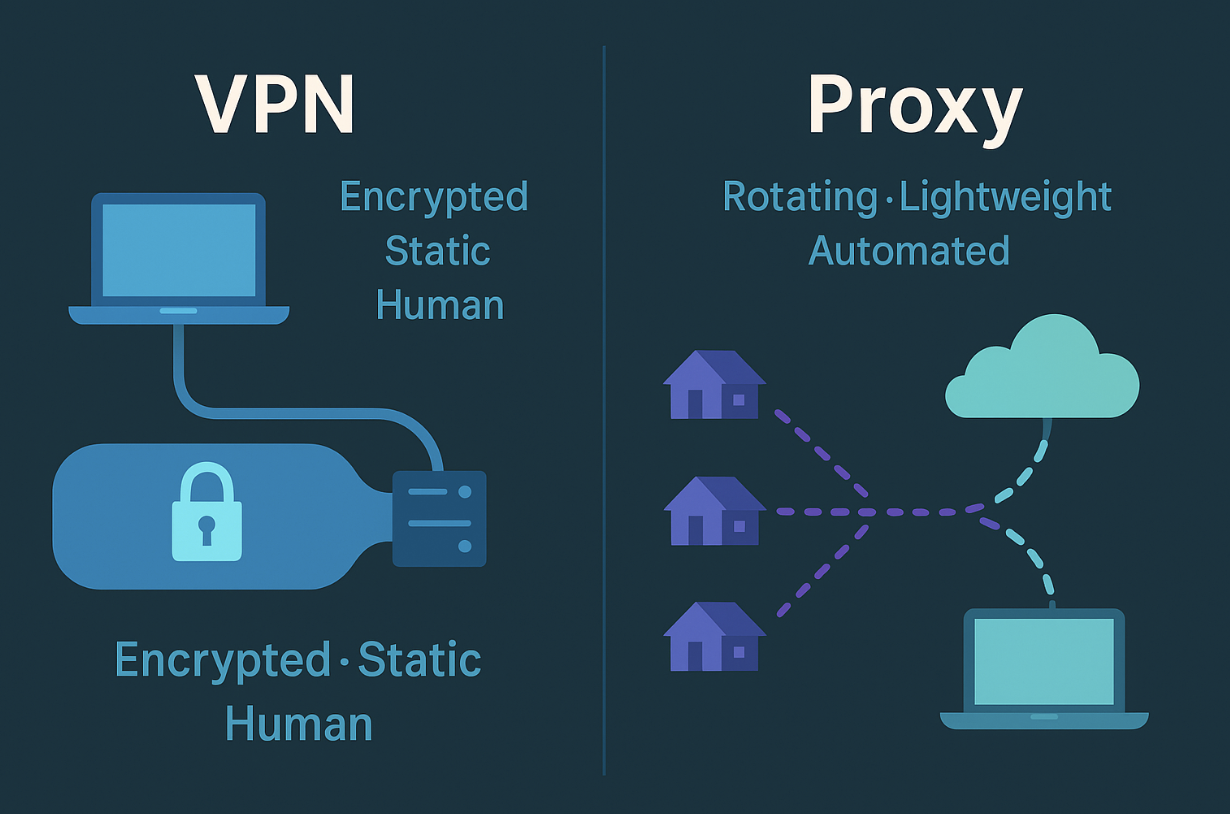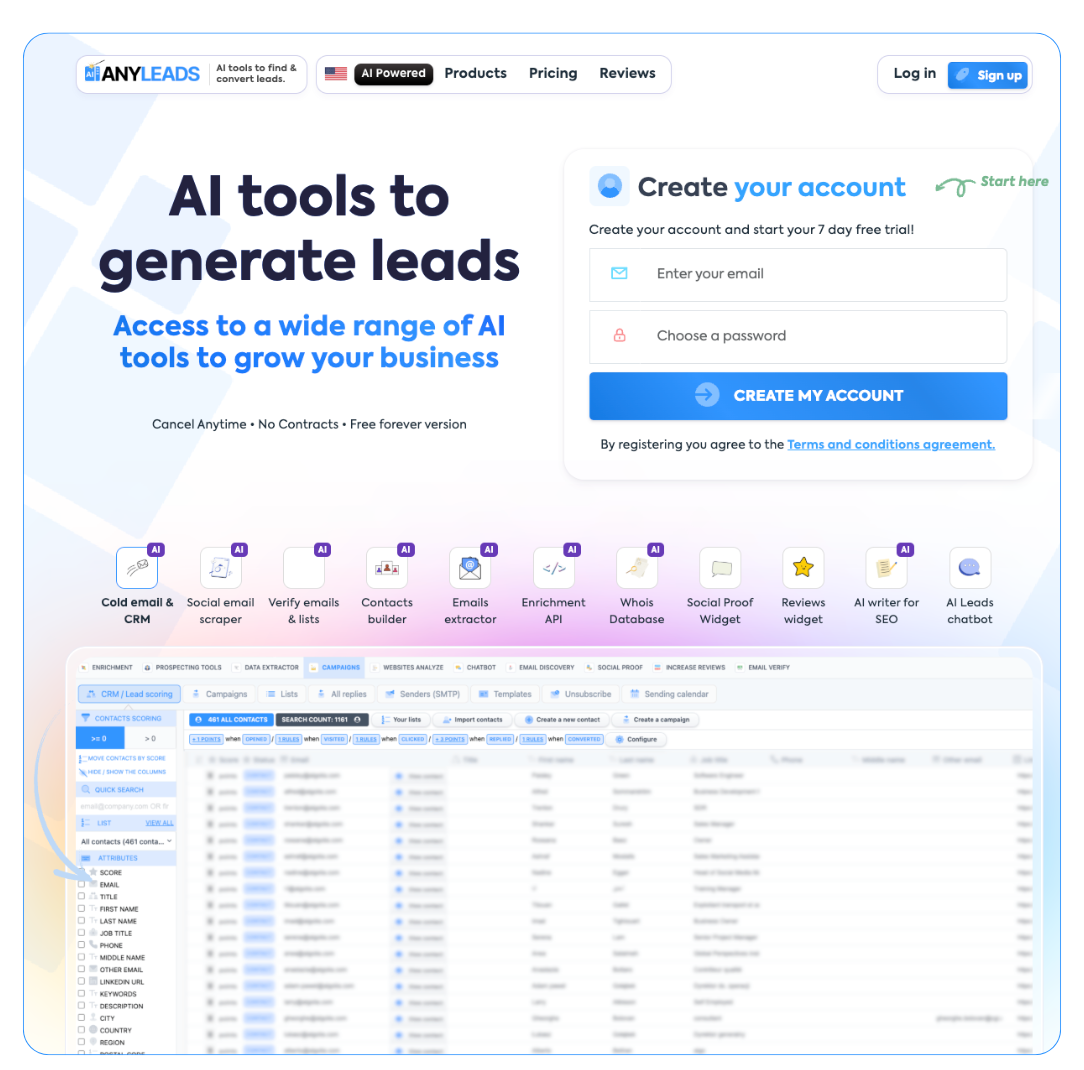 LIMITED SPOTS
All plans are 30% OFF for the first month! with the code WELCOME303
LIMITED SPOTS
All plans are 30% OFF for the first month! with the code WELCOME303

 LIMITED SPOTS
All plans are 30% OFF for the first month! with the code WELCOME303
LIMITED SPOTS
All plans are 30% OFF for the first month! with the code WELCOME303


Nearly one in six B2B email messages still never reach the inbox in 2025, leaving average deliverability stuck at 83.1 percent (landbase.com).
You scrub your lists and sharpen your copy, yet replies vanish. The missing link is your network identity. Gmail, Outlook and LinkedIn now score every sender IP before a session starts. If that address looks noisy or nomadic, the mailbox drops your message—along with the revenue behind it.
Gmail raised the bar first. According to Google’s support documentation, any sender that pushes 5,000 or more emails a day to Gmail must pass SPF, DKIM and DMARC, or messages route straight to spam. Outlook will follow on May 5 2025 with the same rule and a hard-reject code 550 5.7.515 for violators, as reported by the DMARC Guy blog. Together, these two inbox giants handle more than half of all B2B mail, so one missed setting can wipe out your reach.
The filters don’t stop at headers. Imperva found that traffic from data-center IPs is 4.5 × more likely to be flagged as malicious than traffic from residential ranges. When your sequencer fires from a noisy shared block, Gmail throws CAPTCHAs and soft bounces to check for Identity verification related, and LinkedIn resets sessions. Pipeline bleeds away while reps wonder why open rates collapsed.
Flip the equation with a quiet, consistent identity. A dedicated VPN exit or a curated residential proxy tells mail providers, “Same user, same place, legitimate intent.” Logins stick, cookies survive and the exact cadence reaches more eyes without extra sends.
Every blocked session steals revenue—not copy quality or list hygiene. We own the pipe as surely as we own the subject line. Pick the right one and you reclaim deliverability, trust and measurable dollars.
A VPN creates an AES-256 encrypted tunnel from your laptop to a known server, so the outside world sees one predictable IP and nothing else.
Why that matters:
Thirty-six percent of Americans have faced a security scare on public Wi-Fi, according to a Panda Security survey. The tunnel hides session cookies from café snoops.
A fixed exit IP, with a dedicated IP VPN that reserves an exclusive address in eight countries, looks familiar to Gmail, HubSpot and LinkedIn, trimming CAPTCHAs and forced logouts.
RevOps can lock geography, so a rep in Denver can appear in Paris when testing a form.
Because the endpoint is yours alone, no stranger can dump risky traffic into the same reputation pool. Your cold-email thread keeps its good name.
A proxy also hides your IP, but it does not encrypt every packet or keep long-lived cookies intact. Fortinet describes a proxy as a “middleman,” while a VPN is a “secure tunnel.”
That lighter touch works for low-risk, high-volume jobs such as enrichment pings or geo-checking a landing page, where rotating residential IPs spread the load and avoid rate limits.
Use a business VPN with a dedicated or static IP whenever humans log in, send personalized messages or scroll LinkedIn.
Use a curated residential proxy pool when a script fires hundreds of simple requests. One tool keeps sessions alive, the other keeps automation discreet.


Not every click looks the same to risk engines. Match the pipe to the task, and you win back hours the team already pays for.
Live LinkedIn research and messaging
SDRs spend 37 percent of their day—about three hours—inside LinkedIn and other prospecting tools, according to LeadGenius research. A static VPN IP keeps session cookies intact and removes the constant “Verify it’s you” prompts.
Email warm-ups
Warming an account is all about narrative coherence. A fixed exit never hops continents, so Gmail’s device graph sees one writer, not a relay race.
Lightweight data enrichment
Automation fires fast. Rotate clean residential proxies to spread hundreds of low-risk calls an hour across homeowner IPs and avoid the rate limits that Cloudflare now exposes through its new Ratelimit headers.
Geo-specific form tests
Need Paris eyes on a Chicago form? Toggle a country-matched proxy or city-pinned VPN exit, then log each hop for audit.
When the task fits the pipe, you stop wasting time on CAPTCHAs. Cloudflare estimates that humanity loses five hundred years of work each day to those puzzles. The stack fades into the background, and revenue moments stay on schedule.
Security teams are not the only ones tightening screws. Cloudflare telemetry shows that 38 percent of all HTTP traffic is automated, and 34 percent of those non-verified bot requests get blocked outright. At the login layer the picture is harsher: 94 percent of global authentication requests in March 2025 came from bots, and 64 percent used leaked credentials.
LinkedIn is just as strict. In October 2025 the company sued ProAPIs for spinning up “hundreds or thousands of new accounts per day” to scrape member data for up to $15 k a month, proof that industrial scraping no longer hides in plain sight.
Why should your Chicago sales team care? The same heuristics that catch botnets flag outreach crews when their network identity jumps countries or rotates like a script. Trip a fraud score and you lose more than an account; you lose sender reputation, delivery credits and valuable quota time.
Legal exposure adds another layer. TCPA, CAN-SPAM and platform terms all assume you keep a clean audit trail. Plaintiffs have won five- and six-figure settlements under TCPA texting rules alone, reports The Sun; scraping or bulk-send violations can escalate even faster.
The fix is not zero automation; it is disciplined, low-noise identity. Pin human logins to static VPN exits, run light enrichment behind a curated residential proxy pool and log every hop. When regulators knock, you present a paper trail. When platforms audit, your traffic profile looks exactly like a real user.
Defenses keep sharpening. With a thoughtful stack, so do you.
Vendors often promise that a dedicated IP will “instantly land you in the inbox.” Reality is different:
The sending IP shapes inbox placement, and warming that IP takes four to eight weeks for moderate volumes—sometimes more than ten weeks for senders pushing 100,000 emails a day—according to Suped’s deliverability guide. Skip the ramp and mailbox providers throttle or block you.
The egress IP behind your browser or API session never travels in the email header, so swapping it will not lift a spam score.
Teams that buy a dedicated VPN IP expecting mailbox magic usually see no gain. The VPN address shines elsewhere: fewer “Verify it’s you” prompts, stickier SaaS cookies and cleaner LinkedIn footprints. Those wins free you to sell instead of resetting sessions.
Shared IPs are not villains. At low mail volume, you can ride a provider’s seasoned pool and borrow its reputation; the same applies to a curated residential proxy rotation when automation stays modest and human-like.
So when is a dedicated exit worth the fee?
A human needs the same IP every day—for example, a traveling SDR, an executive in Salesforce or any account that freezes on location drift.
Treat the two IP roles separately: sending IPs influence inbox placement, while network exits drive session trust. Keep them straight, and you avoid paying twice for the same myth.


Human logins need sameness. A static business VPN exit keeps device, IP and working hours aligned, and vendor options like TorGuard dedicated or residential IP VPNs promise CAPTCHA-free sessions by locking each rep to the same address. Microsoft’s risk-engine documentation shows that unfamiliar sign-ins trigger 62 percent of account lockouts, so a fixed IP lets LinkedIn or HubSpot stop asking for extra codes.
Automation needs rotation at a human pace. Cloudflare’s bot-management team recommends staying below 120 requests per IP per hour to avoid its default BotFight thresholds. A curated residential proxy pool lets enrichment scripts spread that load without tripping alarms.
Two pipes, two policies.
VPN traffic: logged and reviewed quarterly.
Proxy traffic: metered, rate-limited and barred from touching login cookies to prevent cross-contamination.
Document the roles. A one-page matrix during onboarding spells out which tool powers which workflow. If a script inflates into a bot farm, RevOps spots the spike before platforms do.
Lock down human sessions with stability, let machines roam with restraint and keep the two worlds a VLAN apart. That discipline turns security reviews into rubber stamps and frees reps from the CAPTCHA hamster wheel.
Pilot on a tight loop.
Scope: one week, two SDRs, one enrichment script.
KPIs: CAPTCHA interrupts, session timeouts, platform blocks.
Success bar: a drop of at least 50 percent in all three KPIs, mirroring Cloudflare research that optimized identity cuts managed challenges in half.
Insist on live testing.
Run your real stack—Gmail, HubSpot, LinkedIn—through the pipe. Track latency, cookie stickiness and any “Verify it’s you” prompts. Humans spend nine to fifteen seconds per distorted-text CAPTCHA on average, notes a USENIX study; every avoided challenge returns real selling time.
Assign clear ownership.
RevOps → VPN keys
Growth Ops → proxy credentials
IT → quarterly log audits
Legal → terms-of-service review
Keep onboarding light.
A 15-minute desk-side session shows reps how to connect, spot a healthy tunnel and file an IP-lockout ticket. The average employee already spends 47 hours a year in formal training, according to High5; do not add more than you save.
Review at 30 days.
Pull the same three KPIs plus reply rate and meetings booked. If the curve still slopes up, extend the stack to the full team.
Run this 90-second check before you spend a dollar.
Is a human logging in, personalizing messages or scrolling LinkedIn?
Yes → Static business VPN.
No → Go to 2.
Will the task push more than about 100 requests per IP every ten minutes? Cloudflare lists that rate as a common managed-challenge threshold.
Yes → Residential proxy pool with rate limits.
No → Either tool works; choose on price.
Does the workflow handle customer data such as names, emails or payment information?
Yes → VPN with end-to-end encryption and access logs.
No → Proxy is acceptable.
If you answer “Yes” on both tracks—meaning humans need stability and scripts need rotation—choose a hybrid setup. It costs a bit more each month but typically cuts CAPTCHA time by half, based on Cloudflare managed-challenge metrics. Every workflow stays in its lane, and your team stays productive.